A Guide To Visit The Best Bali Temples: Bali's Hindu Heart
Tanah Lot Temple, South Bali
Table of Contents Show
Introduction
From the famous Uluwatu Temple and Besakih Temple to the hidden gem of Tirta Empul Temple, Bali is home to many temples that are known for their scenic beauty and spiritual significance. While some of them are well-known tourist attractions, there are many hidden gems in Bali that most people aren’t aware of.
If you’re looking for temples to visit in Bali, this guide is for you. We'll introduce you to the best temples in Bali (and some lesser-known ones too) and share a little of their history and significance. We will also talk about how to explain the concept of a Balinese temple to children.
We’ll start with some information you might find useful about Bali religion, tips for visiting temples and how to describe Bali religion and temples to children.
In a hurry? If you’d like to skip direct to The Guide to bali’s Temples click this button below:
Bali's most beautiful temples
Bali is a beautiful island with many incredibly beautiful temples. The temples in Bali are known for their unique Hindu culture, and they offer beautiful views of the ocean and stunning sunsets, and rural vistas. These temples showcase the best of Balinese architecture and artistry. Balinese temples are diverse in terms of their sizes, designs, materials used, etc., so you're sure to find a beautiful one no matter which you visit. We cover a number of temples in this guide that have unique aspects, such as being a water temple, an oceanside temple on a rock outcrop, a temple floating on a lake, and many more.
Reasons To Visit Bali Temples
Bali is known for its unique temples, offering visitors a cultural experience unlike any other. There are many temples in Bali to visit, located throughout the island. By combining a temple visit with other natural and cultural sights, you can enjoy a rich cultural experience to complement the indulgent, fun, and resort lifestyle aspects of your holiday.
How to choose a Bali temple to visit
There are many temples on this beautiful island to choose from, depending on your desired experience. Some of the most popular temples in Bali include Gunung Kawi Temple and Besakih Temple. Each of these temples has its own main deity, which will be explained by the temple's guides when you visit. Each of these temples has its own unique history and significance, making each an unforgettable experience for visitors. If you pick one of the big name (and therefore busy) temples to visit, try and also pick a smaller temple nearby that will give you a quieter and different experience.
Things to know before visiting Bali temples
We all have a general sense of how to visit a religious site. But here are a few tips for visiting Balinese temples you might be interested to know:
Dress code: Visitors are expected to dress modestly and respectfully. This means that you should cover your legs and shoulders and avoid wearing shorts or sleeveless tops. Sarongs and sashes are usually available to rent or borrow at the entrance of the temple, or you can bring your own.
Etiquette: Visitors should behave respectfully and quietly within the temple grounds. Refrain from shouting, making loud noises, or engaging in any kind of inappropriate behavior. Do not touch any religious objects or offerings unless specifically invited to do so.
Entrance fee: In Bali, some temples are free to enter, but most may require a small donation or entrance fee (usually around $1–$5 per person). Understand that this fee always goes to the temple for upkeep and ceremonies, and the 'staff' you meet at the temple will almost always be volunteers there to help worshipers and tourists experience their temple.
Footwear: Visitors are sometimes required to remove their shoes before entering a temple or area within a temple.
Timing: Temples are usually open from early morning until late afternoon. It is best to check the opening hours before you visit, and know that visiting during religious ceremonies or events will provide an extraordinary experience but may also involve very large crowds.
Photography: Photography is usually allowed, but it is important to be respectful and ask permission before taking pictures of people or specific areas within the temple.
Offerings: It is common to see Balinese people making offerings at the temple. Do not disturb these offerings or remove any items from them.
Souvenir Sellers: This is one of the hardest jobs in Bali. They have to ask, or they won't sell. So, a smile from you as you pass is a human kindness that is free and will be really appreciated by the stallholders.
FAQs: Click to discover the answers:
-
You can join a group tour which is highly recommended because it will be the most time efficient, reliable and you will get a dedicated guide to explain the temple and culture. Another option is to rent a car and a driver who may also be able to explain the temple and their culture to you. For the adventurous, you can also rent a scooter to explore temples on your own.
-
You might like our feature article on Balinese Hinduism, but here is a quick summary:
Balinese religion is called Balinese Hinduism. It's a little bit different from other Hinduism that you might have heard of, such as in India where Hinduism originated, but it has some similarities too.In Balinese Hinduism, people believe in many gods and goddesses. They think that these gods and goddesses are like superheroes who can help them with different things like good health, success, and happiness.
People also believe that everything around us, like the trees, the animals, and the rocks, have a spirit inside them. And they respect these spirits and try to keep them happy by doing things like offering them food and flowers.
In Balinese Hinduism, there are also a lot of ceremonies and rituals that people do to show their devotion to the gods and goddesses. These ceremonies can be big or small, and they usually involve music, dancing, and colorful decorations.
Overall, Balinese Hinduism is a way for people to connect with the world around them and with the gods and goddesses who they believe can help them in their daily lives.
-
A Balinese temple is a special place where people go to pray, offer things to the gods and goddesses, and do ceremonies. It's like a house for the gods and goddesses.
The purpose of a Balinese temple is to show respect and devotion to the gods and goddesses who Balinese believe can help them with different things like good health, success, and happiness. It's also a place for people to connect with their community and celebrate important events like weddings and festivals.
In a Balinese temple, you might see lots of beautiful decorations like colorful flowers, statues of the gods and goddesses, and offerings of food and drink. People might also be singing, dancing, and playing music to honor the gods and goddesses.
Going to a Balinese temple is a way for people to show gratitude for all the good things in their lives and to ask for blessings and guidance from the gods and goddesses.
-
An 'Odalan' festival is held every 210 days for each temple and is an elaborately decorated temple celebration for the temple itself. It features performances, food stalls, and other festivities, often for a whole month. If you are lucky enough to visit a temple at this time you will have an amazing experience. You can ask at your hotel or villa if they know of a temple in the area that is having their Odalan and you are very likely to find one. Giving a donation when you visit during Odalan is very much appreciated.
-
Balinese and Thai temples and religions have some similarities but also many differences. Here are some of the key differences between Balinese and Thai temples and religions:
Religious practices: The Balinese practice a unique form of Hinduism that is heavily influenced by Buddhism and animism. They believe in a pantheon of gods and goddesses, and their religious practices are focused on maintaining a balance between good and evil. Thai religion, on the other hand, is primarily Theravada Buddhism, although it has also been influenced by Hinduism, animism, and other beliefs.
Temple architecture: Balinese temples are known for their intricate, colorful carvings and decorations. They are usually built with a central courtyard and a series of smaller shrines around it. Thai temples, on the other hand, are known for their tall, pointed roofs, intricate gables, and elaborate decorations. They often feature a large central shrine or stupa.
Temple functions: Balinese temples serve as community centers and places of worship. They are often used for ceremonies and festivals, and they play an important role in the social and cultural life of the Balinese people. Thai temples serve a similar function, but they also serve as centers of education, meditation, and healthcare.
Rituals and ceremonies: Balinese rituals and ceremonies are complex and elaborate, involving offerings, processions, and dances. Many of these rituals are performed to appease the gods and maintain balance in the universe. Thai rituals and ceremonies are also elaborate, but they are primarily focused on the practice of Buddhism and the attainment of enlightenment.
Beliefs about the afterlife: Balinese beliefs about the afterlife involve a complex system of reincarnation and karma. They believe that the soul is reincarnated into a new body after death, and that the quality of the new life is determined by the karma accumulated in previous lives. Thai beliefs about the afterlife are also based on reincarnation, but they emphasize the importance of attaining enlightenment and escaping the cycle of rebirth.
In summary, while both Balinese and Thai temples and religions share some common elements, such as their use as places of worship and community centers, they have many differences in terms of their beliefs, practices, and architecture.
-
The Six Sad Kahyangan, also known as "The Six Sanctuaries of the World," are the most important temples in Balinese Hinduism. These temples are considered sacred and are believed to be the abodes of the gods and goddesses in Bali. Each temple is dedicated to a specific deity and has its unique history and significance.
The Six Sad Kahyangan are:
Pura Besakih: This is the largest and most important temple in Bali. It is located on the slopes of Mount Agung and is considered the mother temple of all other temples in Bali. Pura Besakih is dedicated to the worship of the Hindu trinity of Brahma, Vishnu, and Shiva.
Pura Lempuyang: Located on the slopes of Mount Lempuyang, this temple is dedicated to the god of light and is known for its scenic beauty and stunning views of Mount Agung. The temple has seven temples or levels that visitors can climb to reach the top.
Pura Goa Lawah: Also known as the Bat Cave Temple, Pura Goa Lawah is located near the coast and is believed to be the abode of the serpent god Basuki. The temple is built around a cave inhabited by thousands of bats.
Pura Uluwatu: Located on a cliff overlooking the Indian Ocean, Pura Uluwatu is dedicated to the god of the sea, Dewi Danu. The temple is famous for its stunning sunsets and traditional Balinese dance performances.
Pura Ulun Danu Bratan: This temple is located on the shores of Lake Bratan in the central highlands of Bali. It is dedicated to the goddess of the lake and is famous for its beautiful gardens and serene setting.
Pura Tirta Empul: This temple is located in the village of Tampaksiring and is famous for its holy spring water, which is believed to have healing properties. The temple is dedicated to the god of water and is a popular spot for locals and tourists alike to take part in traditional purification rituals.
These six temples play a significant role in the religious and cultural life of the Balinese people and are visited by thousands of tourists every year.
Note: there are other temples that are sometimes included in the Six Sad Kahyangan, depending on regional differences or opinions. These additional temples may vary depending on the source of information, but some commonly mentioned temples include:
Pura Tanah Lot: This temple is located on a rocky outcrop in the sea and is dedicated to the god of the sea, Dewa Baruna. It is a popular tourist attraction and is famous for its stunning sunsets.
Pura Taman Ayun: Located in the village of Mengwi, this temple is dedicated to the ancestors of the Mengwi royal family. The temple is surrounded by beautiful gardens and is a popular spot for visitors to take a peaceful stroll.
Pura Gunung Kawi: This temple is located in the town of Tampaksiring and is famous for its stunning rock-cut shrines. The temple is dedicated to the ancestors of the Balinese royal family.
Pura Luhur Batukaru: This temple is located on the slopes of Mount Batukaru and is dedicated to the god of the mountains. It is a remote temple and is surrounded by lush rainforest, making it a popular spot for nature lovers.
While these additional temples may not always be considered part of the Six Sad Kahyangan, they are still considered important and sacred temples in Bali.
The Best Temples in Each Area of Bali, Indonesia
If you’re looking for a beautiful temple to visit in Bali, there are over 20,000 of them to choose from. There is no best temple on Bali, but there certainly are temples of supreme significance or have a unique aspect that make them compelling for visitors. Our selection is constantly growing so keep checking back regularly whilst planning your visit and even after you arrive. You won't be disappointed with the diverse sights and experiences available at any of the temples we feature here.
Each temple on our list has its own detailed guide, so click through to read those that interest you and you will find address, map link and essential information for each.
The Guide To Bali's Temples by Region
The Best Temples in South Bali
Note: Each temple in this section has its own detailed guide. Click the image or ‘Read more’ link to visit for detailed tips, the address, a map link, and more.
The Uluwatu Temple is one of the major directional temples in South Bali and is located on the southwestern tip of the island. This temple is a temple of worship to the Hindu gods Shiva, Vishnu, and Brahma. South Bali is also where you will find another of Bali’s most famous temples - Tanah Lot Temple. Famous with visitors for its sunset, this temple is one of the most significant in Balinese religious life.
The Best Temples in Central Bali
Note: Each temple in this section has its own detailed guide. Click the image or ‘Read more’ link to visit for detailed tips, an address, a map link, and more.
Central Bali is home to some of Bali's most significant and unique temples, from famous water temples like Tirta Empul Water Temple (tirta empul means holy spring), to the very secret Pura Mengening. Our selection of temples in Central Bali include many that are within easy reach of Ubud.
The Best Temples in East Bali
Note: Each temple in this section has its own detailed guide. Click the image or ‘Read more’ link to visit for detailed tips, an address, a map link, and more.
The temples of East Bali are a must-see for any visitor to the island. Besakih temple, also known as the ‘Mother temple’ of Bali, is a sacred site that can be visited from all over the island. The temple is famous for its stunning views of Mount Agung and is often considered the spiritual center of East Bali. There are many other temples in East Bali worth visiting, and these temples offer visitors a glimpse into local culture and religious traditions.
The Best Temples in North Bali
Note: Each temple in this section has its own detailed guide. Click the image or ‘Read more’ link to visit for detailed tips, an address, a map link, and more.
Bali is home to a wide range of temples, from small shrines dedicated to a local family deity to large temple complexes with multiple temples and holy sites. The best temples in Bali vary based on location and temple complex, but some of the most beautiful temples are those in the North of the island. These temples are often built in natural settings like rivers, rice paddies, or lush forest and feature unique architectural designs. Whether you're visiting a small temple dedicated to a local family deity or exploring one of Bali's large temple complexes, make sure you take time to explore the beauty of the temple and their surrounding natural wonders as well.
Conclusion
This guide is one of the biggest on the internet and it is constantly growing. So, congratulations for making it all the way down here!
You are going to have an amazing time exploring Bali's temples and we hope that we have introduced you to a few that will inspire your journey. We are sure that if you visit one or two temples during your stay they will become some of the most treasured moments of your trip. Thank you for making us part of your journey of discovery!
Frequently Asked Questions
What is the holiest temple in Bali?
The holiest temple in Bali (and one of Indonesia’s significant religious sites) is the Besakih Temple, also known as the 'Mother temple'. Located on the Southwestern slopes of Mount Agung, this temple complex has been standing for more than 1,000 years. Composed of 86 temples, it stands at an elevation of 1,000 metres and is a special pilgrimage site to the Balinese people. Apart from its spiritual importance, its location amidst a landscape of lush ricefields and natural waterfalls makes East Bali an idyllic destination to relax and take in the beautiful view.
What are the best bali temples to visit? Should I visit Uluwatu, Pura Besakih, Lempuyang, Saraswati in my itinerary?
Bali is home to many beautiful and unique temples and sacred sites, each with its own special energy and atmosphere. Some of the most popular temples for tourists to visit in Bali include the following:
1. Pura Besakih - often referred to as the 'Mother Temple' of Bali, this stunning temple complex features impressive architecture and breathtaking views of Mount Agung.
2. Ulun Danu Beratan - situated on the shores of Lake Beratan, this temple is dedicated to the goddess of water and fertility, Dewi Danu.
3. Tanah Lot - one of the most iconic temples in Bali, this temple sits atop a rocky outcropping just off the coast and offers stunning views of the ocean.
4. Uluwatu Temple - perched high on a cliff overlooking the Indian Ocean, this majestic temple is dedicated to Sang Hyang Widhi Wasa, the supreme God in Balinese Hinduism.
5. Goa Gajah Temple - located in central Bali near Ubud, this ancient temple is believed to date back to the 11th century and features a mysterious cave entrance surrounded by lush gardens and carvings.
What is the biggest Hindu temple in Bali?
The biggest and most important Hindu temple in Bali is Pura Besakih, also known as the 'Mother Temple of Bali'. This temple complex is located on the slopes of Mount Agung and dates from the 10th century. It is dedicated to the Hindu trinity of Shiva, Brahma, and Vishnu, making it an important pilgrimage site for Hindus all over the world. In fact, it’s sometimes referred to as the “Navel of the World” because of its spiritual significance.
What is the most photographed or instagram-ed temple in Bali?
The most photographed temple in Bali is the Pura Lempuyang Luhur Temple, also known as the "Gates of Heaven". Located high above sea level at 3,280 feet, this temple can be reached by climbing up around 1,700 steps.
Dedicated to the God of Peace, it is a part of an extensive temple complex and is featured on the 50,000 rupiah bill and is a star on Instagram. The temple complex also has a beautiful garden area with lotus ponds and fragrant frangipani trees that make this place even more special. It truly is a sight to behold and will remain one of Bali's most memorable attractions!
What are the best temples to visit in Bali with family?
Bali is home to many temples that are beautiful, unspoiled, and great places to visit with the family. Not only can temple visits be a great cultural experience, they can also be an enchanting experience for families. Some of the best temples in Bali are located in Ubud, Uluwatu and Nusa Penida. If you plan your trip accordingly, you can experience these temples’ unique spiritual energy and powerful presence. The temple complex of Besakih on the slopes of Mount Agung is known as the “Mother Temple of Bali” and it is definitely worth visiting. Pura Ulun Danu Bratan is another temple complex set against the stunning backdrop of Lake Bratan, making it a great spot for photos and a memorable experience for kids.
Which is the oldest temple in Bali?
Goa Gajah, also known as the Elephant Cave, is said to be the oldest temple in Bali and it was built in the 9th century. It is located in the village of Bedulu, close to Ubud and is a popular tourist attraction. The temple complex features a stone statue of the Hindu God Ganesh, fragments of a lingam and yoni, and seven statues of women holding water pitchers. Goa Gajah is one of the most important temples in Bali and not to be missed if you are visiting the area.
How many temples in Bali?
Bali is home to a whopping 20,000 temples, also known as 'pura' in Balinese. Each Balinese village usually has at least three temples, while larger villages may have more. On top of that, there are many private temples in homes, temples at hotels, and temples found in government offices. The majority of the temples in Bali are Hindu temples, and most of them are open to tourists who are interested in exploring and capturing the beauty of such sacred places with pictures. If you’re looking for beautiful old Hindu temples to explore, there are dozens of them located predominantly in Ubud and north Bali, with some great ones also found in Uluwatu and Nusa Penida islands.
What do you wear to temples in Bali?
When visiting temples in Bali, it is important to adhere to their cultural norms. In order to be respectful and abide by the local customs, you should wear appropriate clothing such as a sarong that covers your ankles and cover your shoulders. If you don't have a sarong handy, you can borrow one for free at most temples or buy them in the parking area around the temple. You may also be given a sash to wear in addition to the sarong. It should also be noted that women are asked not to enter temples while they are menstruating. So, visitors try to plan temple visits accordingly.
What are the best time to visit famous Bali temples?
If you want to visit the famous temples of Bali, the best time to go is early in the day, before locals arrive for their own ceremonies and activities. This will allow you to get a more intimate and peaceful experience without being surrounded by crowds. Additionally, if you are combining your temple visit with a natural attractions such as a waterfall or ricefields, it is best to go to the temple first before heading out on the other excursion. This way, you can enjoy the temple in all its glory before heading out for the rest of your day.
How do you get to these famous temples in Bali from Kuta, Ubud or anywhere else?
There are several ways to get to the famous temples in Bali. One of the most efficient and reliable ways is by joining a group tour. Not only will you have access to professional guides, but you’ll also be able to get to your destination quickly and safely. Another way of getting around is by renting a car or scooter and exploring the temples in Bali on your own time. There are many tours available that will take you to popular temples like Taman Ayun Temple, Tanah Lot Temple, Lempuyang Temple. Many will combine destinations like Saraswati Temple in Ubud with the Ubud Monkey Forest or the Ulun Danu Beratan Temple with the Bedigul Botanic Garden. These tours will pick you up from your Kuta hotel (or wherever you are staying) making the day trip completely effortless.





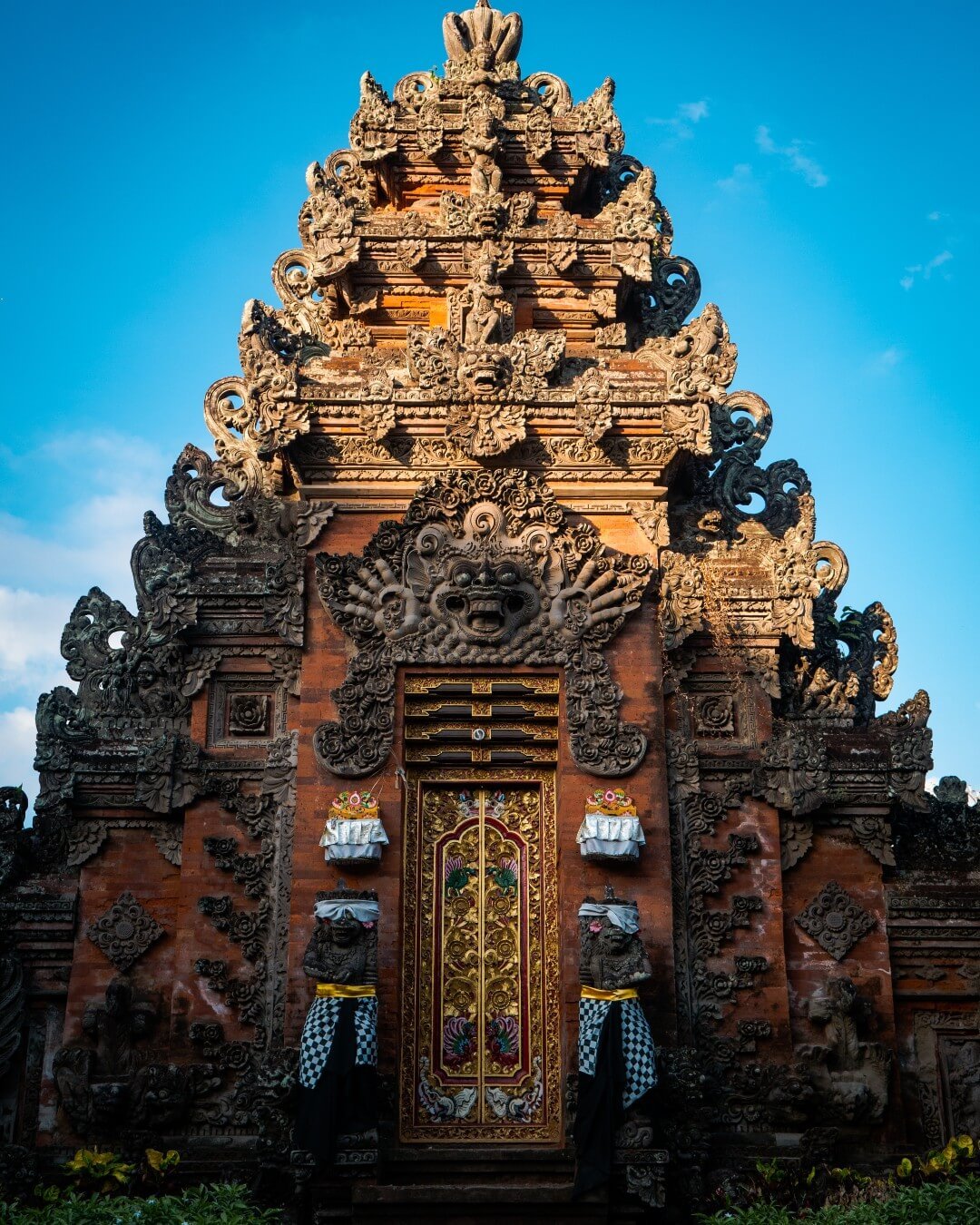
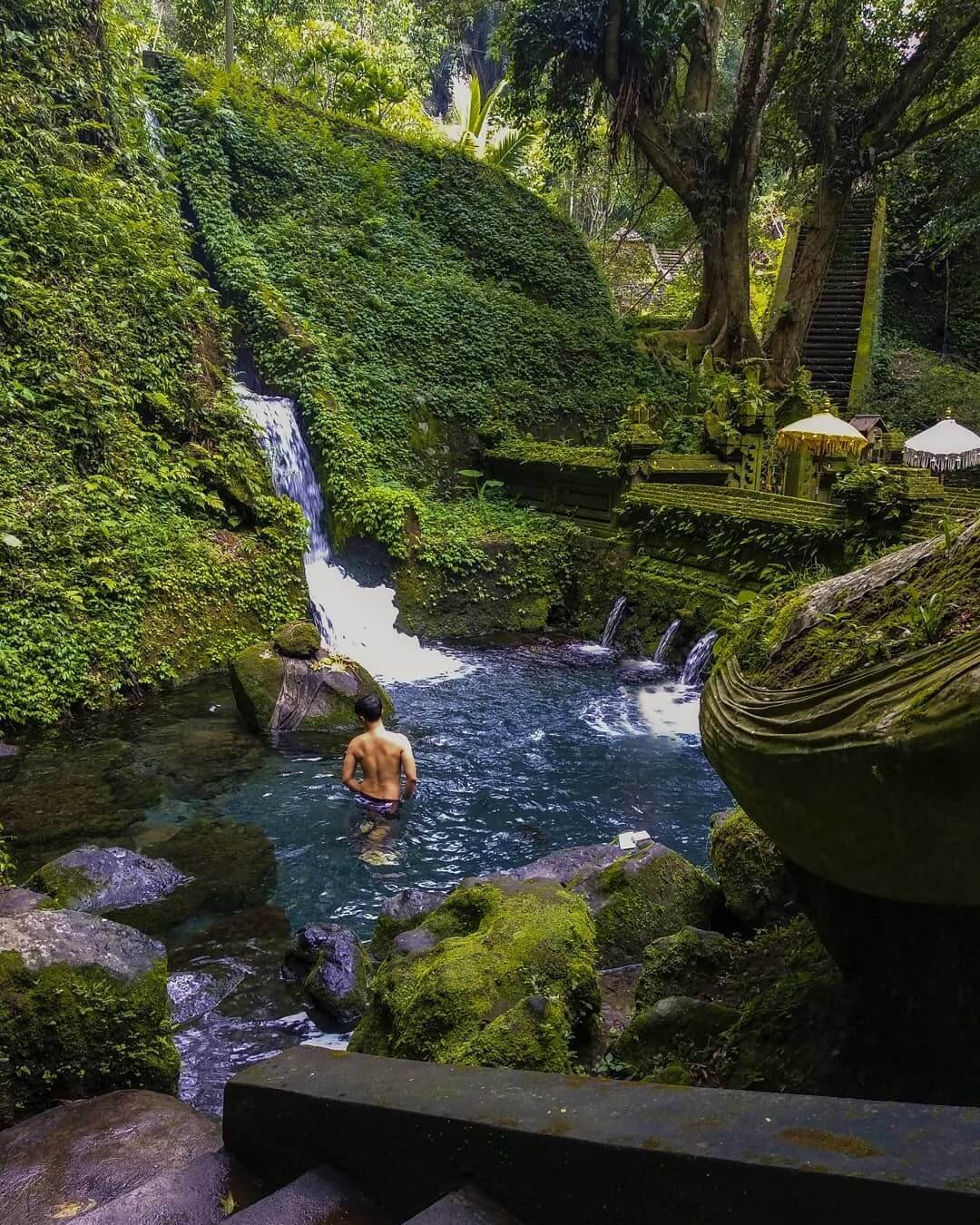


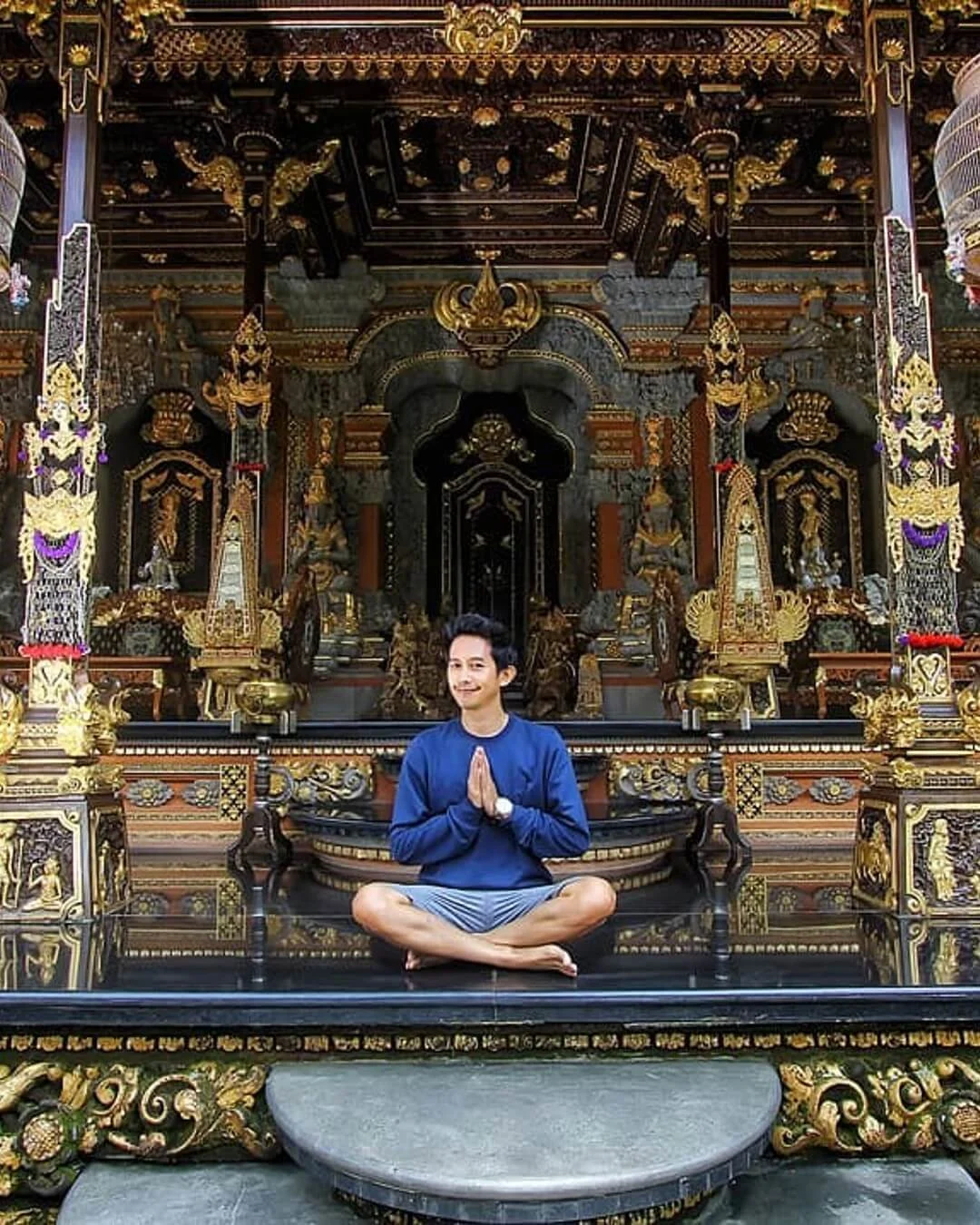





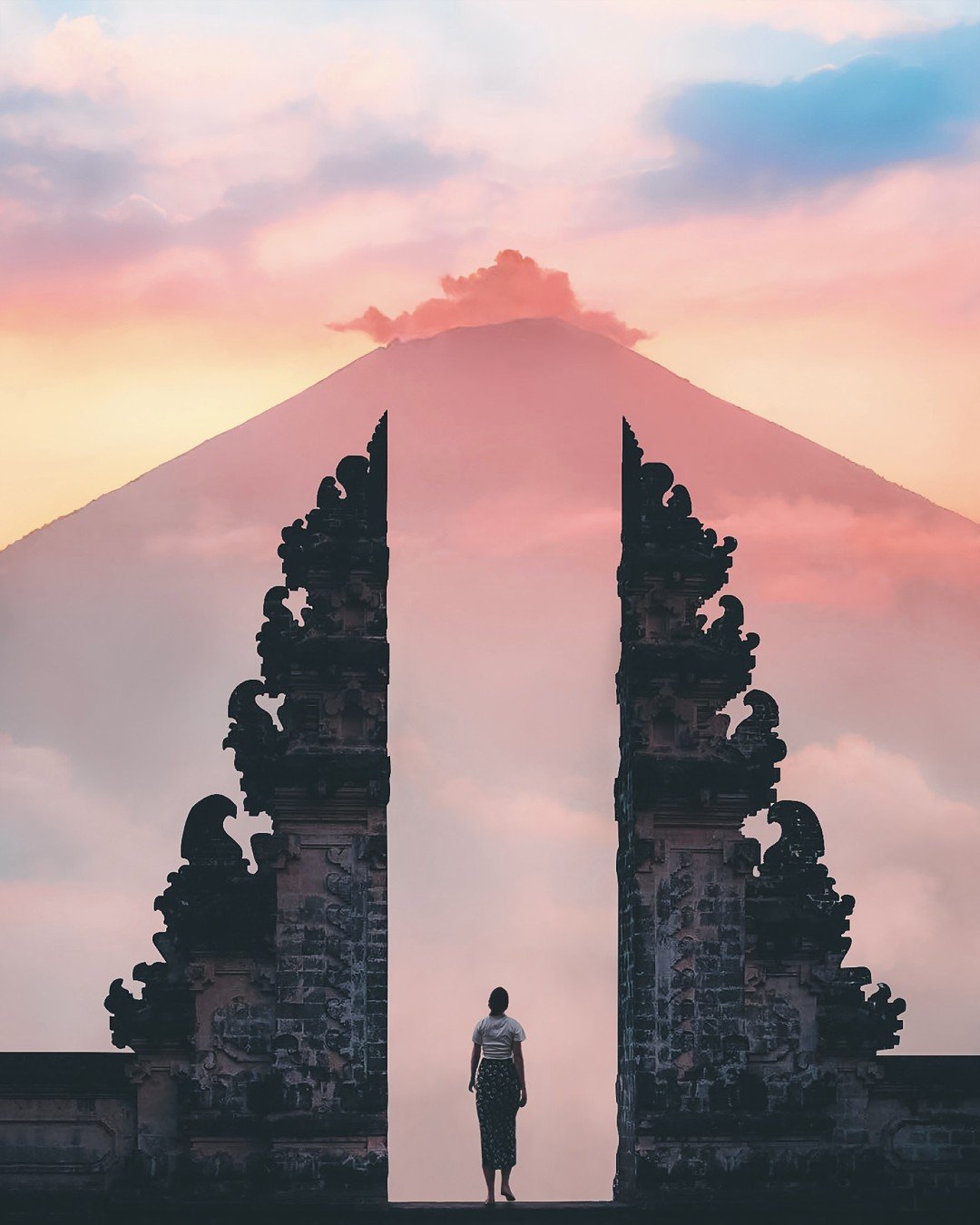


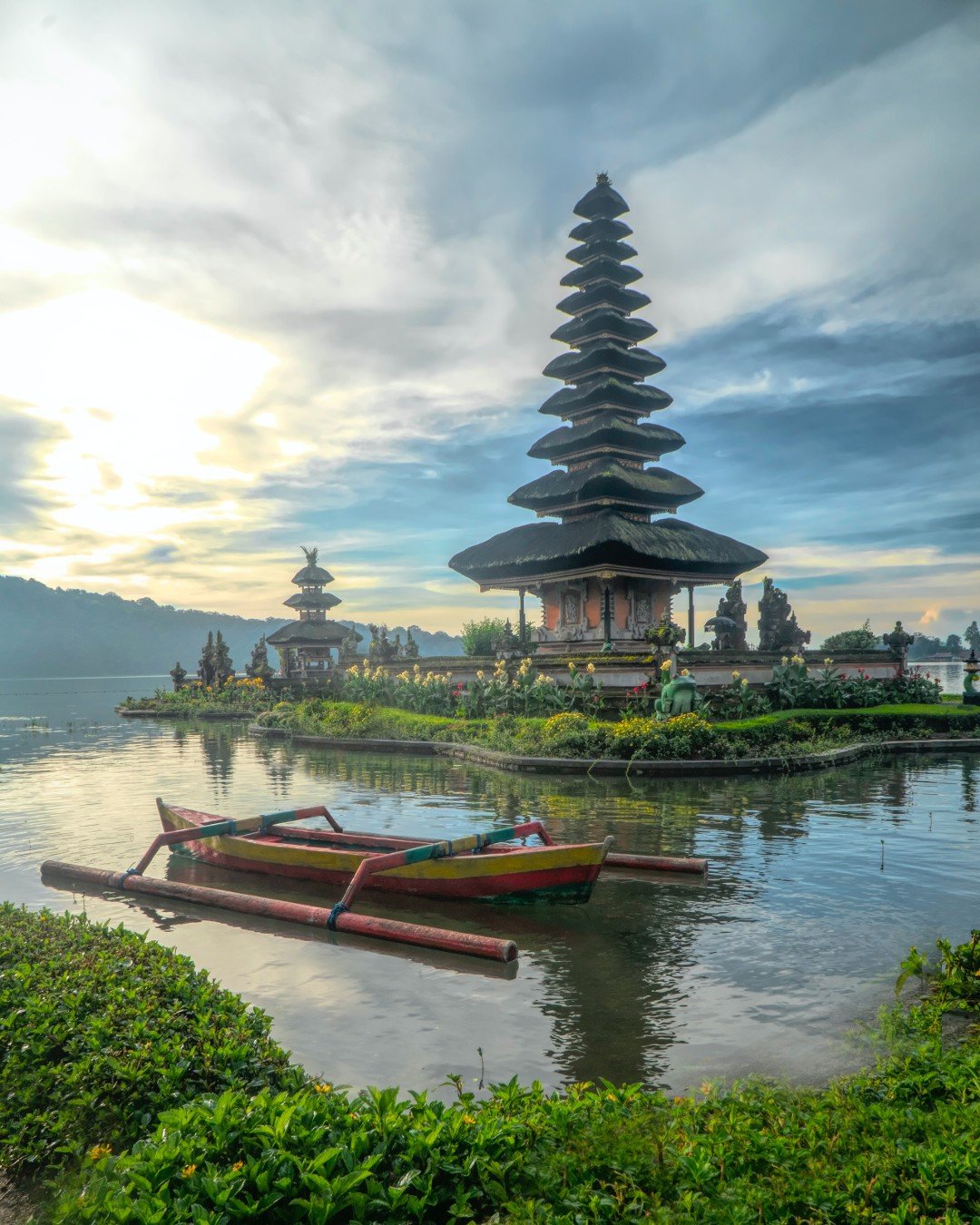
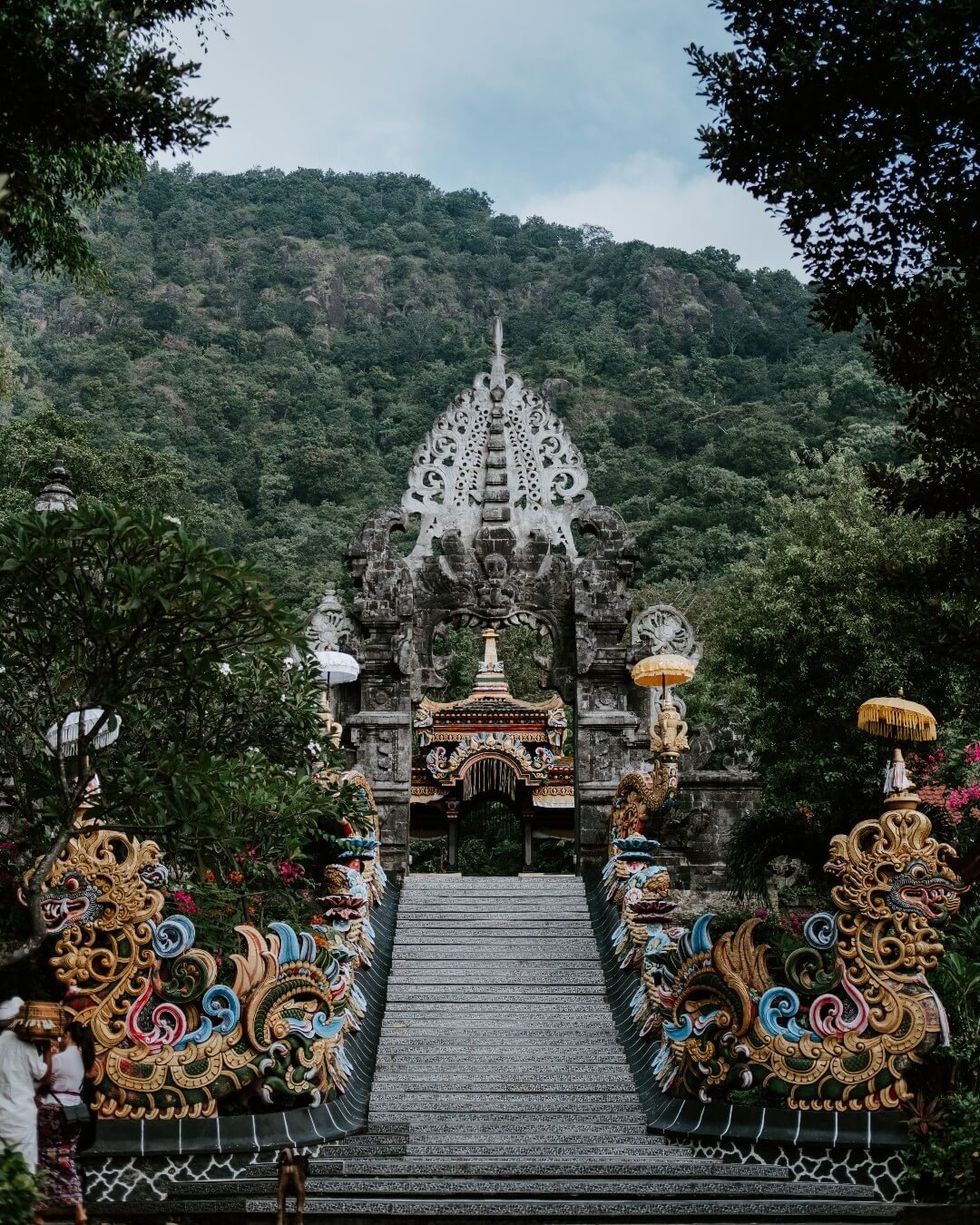






Wondering what to pack for Bali and Lombok? Welcome to the ultimate list of travel accessories and essentials for a trip to Bali and Lombok! This comprehensive and well-researched list has been created to ensure that you have everything you need for a memorable and stress-free trip. From practical items like sunscreen and insect repellent, to essential travel tech and safety, this list has you covered. Be prepared for any adventure that comes your way in Bali and Lombok!